A pilgrim in the Camino de Santiago: The joy of walking the trail of the past
From a distance, bagpipe music played. We were nearing the end of the Camino pilgrimage walk.

It was an emotional moment for every pilgrim, some who had walked 800 kilometers from a town in the Pyrennes mountains in France to Santiago de Compostela in Galicia, Spain, others from Sarria, for the last 100 kilometers of the Camino Frances, the most popular route.
For the two of us – my former classmate Dr. Evelyn Reinoso Lacson and me, who were part of a group of 16 from the Philippines – it was our last leg from Monte de Gozo (Mount of Joy), in the town of San Marcos, the hill where pilgrims catch the first glimpse of the spires of the Santiago Cathedral. Our map said that was only 4.8 kilometers to the city center. But my smart watch showed we had already walked 7.2 kilometers because we had followed a wrong arrow when we entered the city.
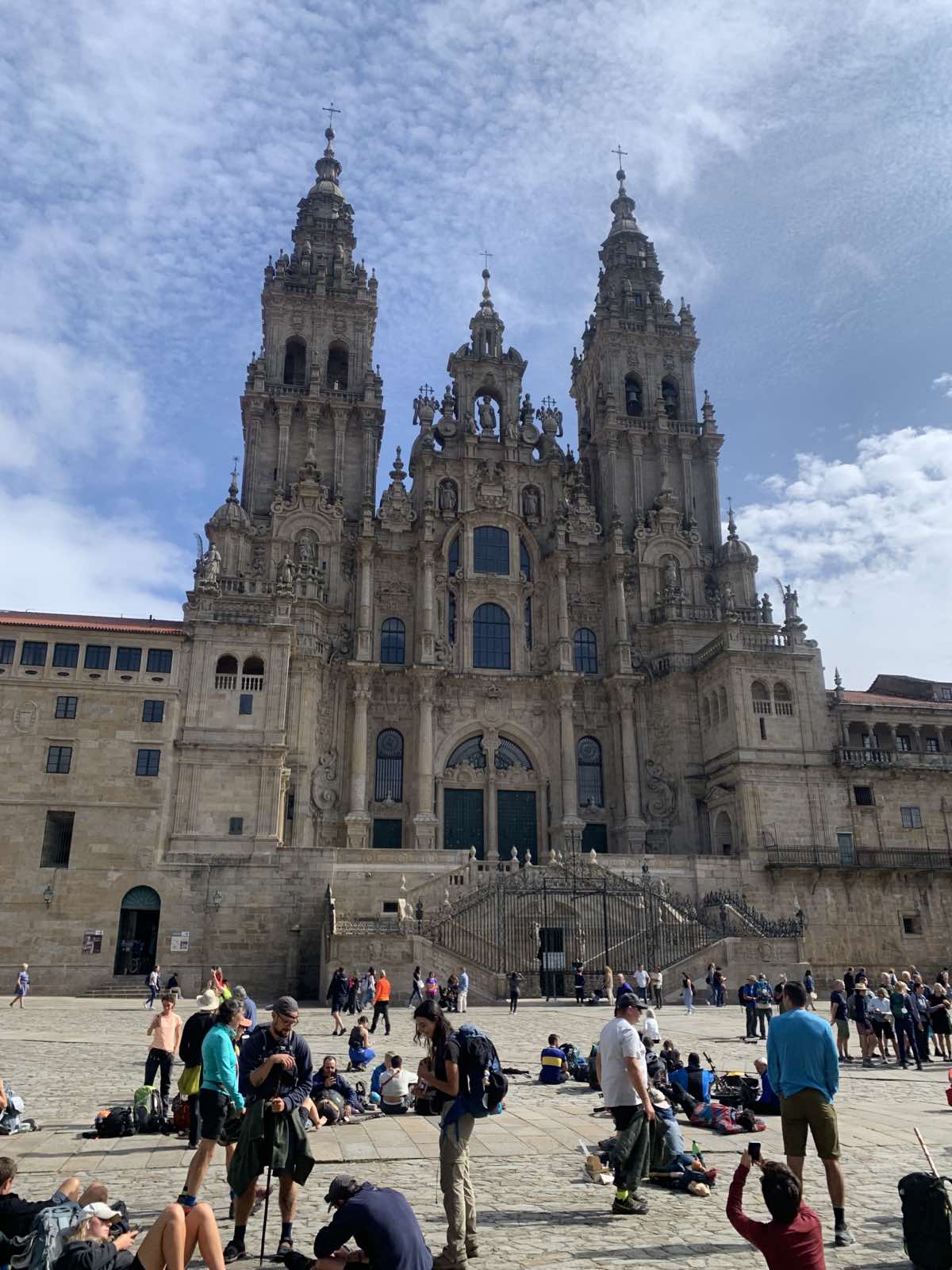
THE END OF THE CAMINO TRAIL – Pilgrims rest in front of the grand façade of the Santiago Cathedral
It was now about 3 p.m., and we had walked the 7-km stretch under the hot sun, over windy trails, most of them city roads, and my legs and feet were marking each step with pain.
But all that you forget when the bagpipe music floats in the air. We walked into the public square and the sight of the massive and magnificent façade of the Santiago Cathedral moved me to tears – as it did many of the pilgrims. They embraced, kissed, fell on their knees, or just squatted on the cement floor silently staring at the cathedral towers shooting up 74-meters high in the sky.
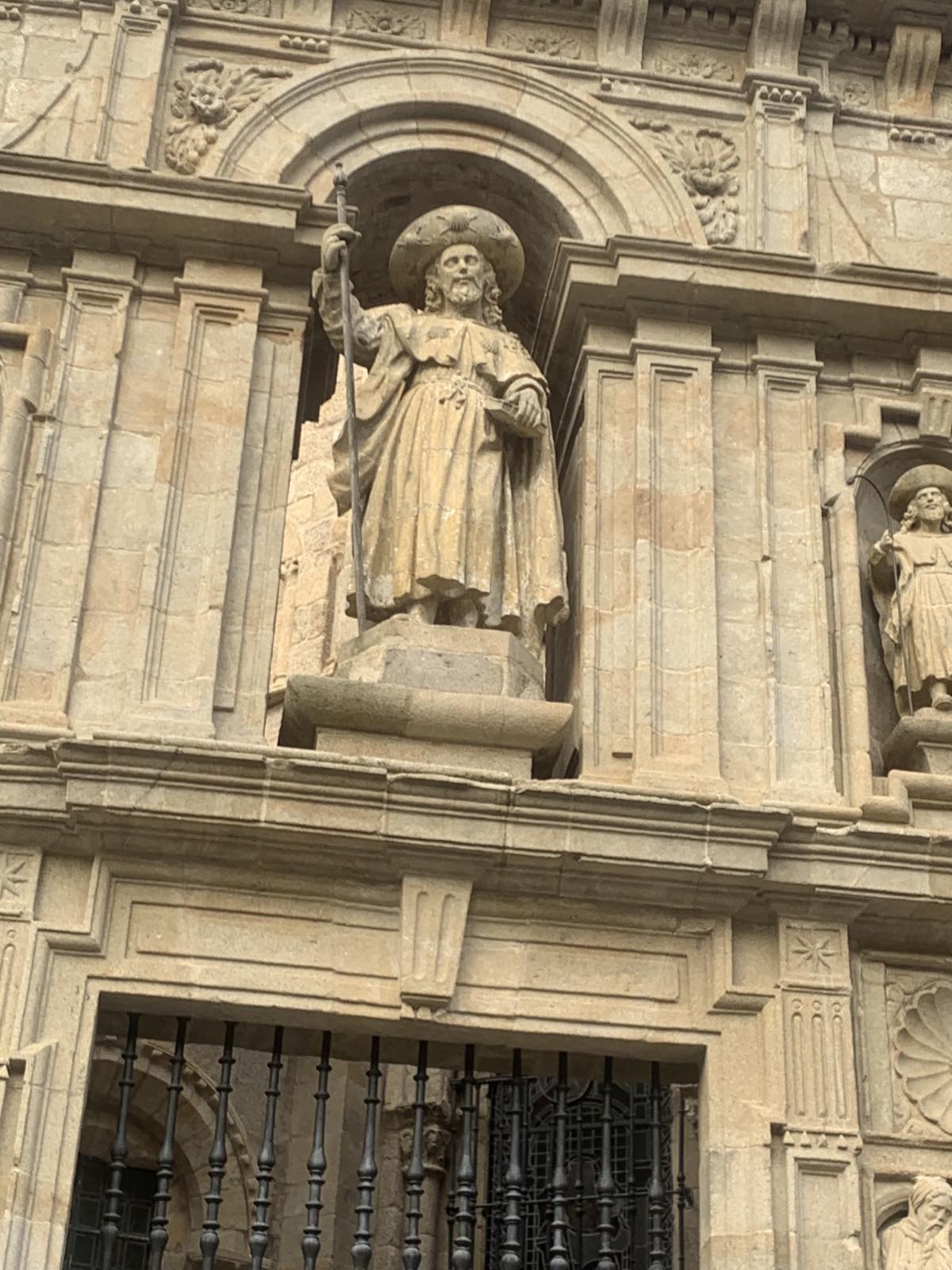
ST. JAMES the Apostle
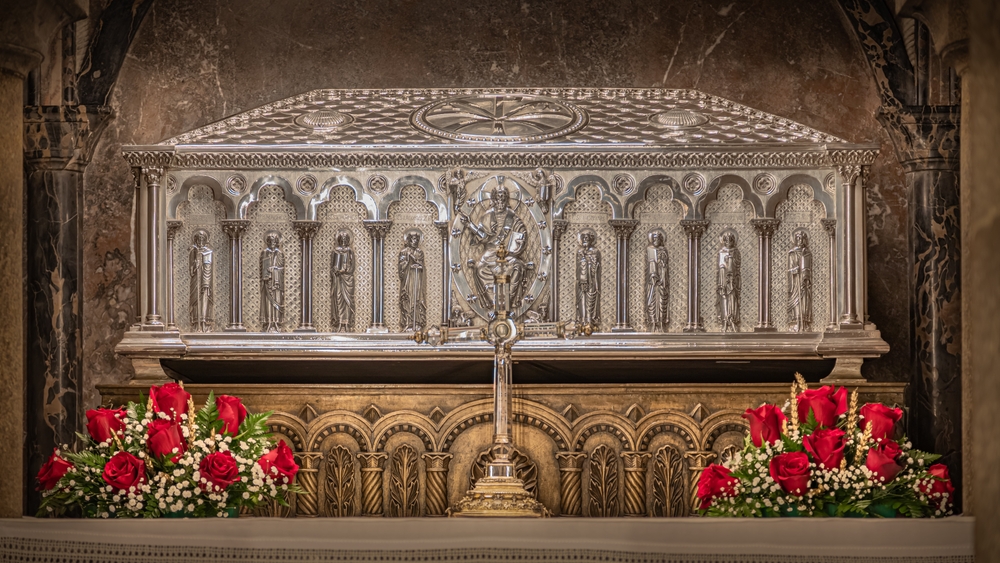
TOMB OF ST. JAMES THE Apostle at the Santiago Cathedral. (Shutterstock)
All eyes were on the Obrodoiro façade, a truly grand Baroque masterpiece started in the 17th century, where St. James the Apostle, dressed as a pilgrim, stands at the highest recess of the center tower. It was a sight that affirmed everyone’s reasons to be there – be that religious, cultural, or merely for the physical challenge to test one’s stamina.
At that moment, I was swept with the feeling of being a pilgrim. Despite the body aches, I limped to follow the lines to visit the tomb of St. James the Apostle. There, I recited the prayers I had said over and over during the long walks, the security staff had to tell me to “move on.”
Despite the tiredness, I attended the pilgrims’ evening mass and became mesmerized by the experience of being in that ancient grand church with the tomb of St. James the Apostle below the high altar which has the apostle’s statue at the center. Above it is a grand baldachin or canopy, supported by eight life-size angles in golden robes. Work on the baldachin started in 1665, according to the church museum guidebook.
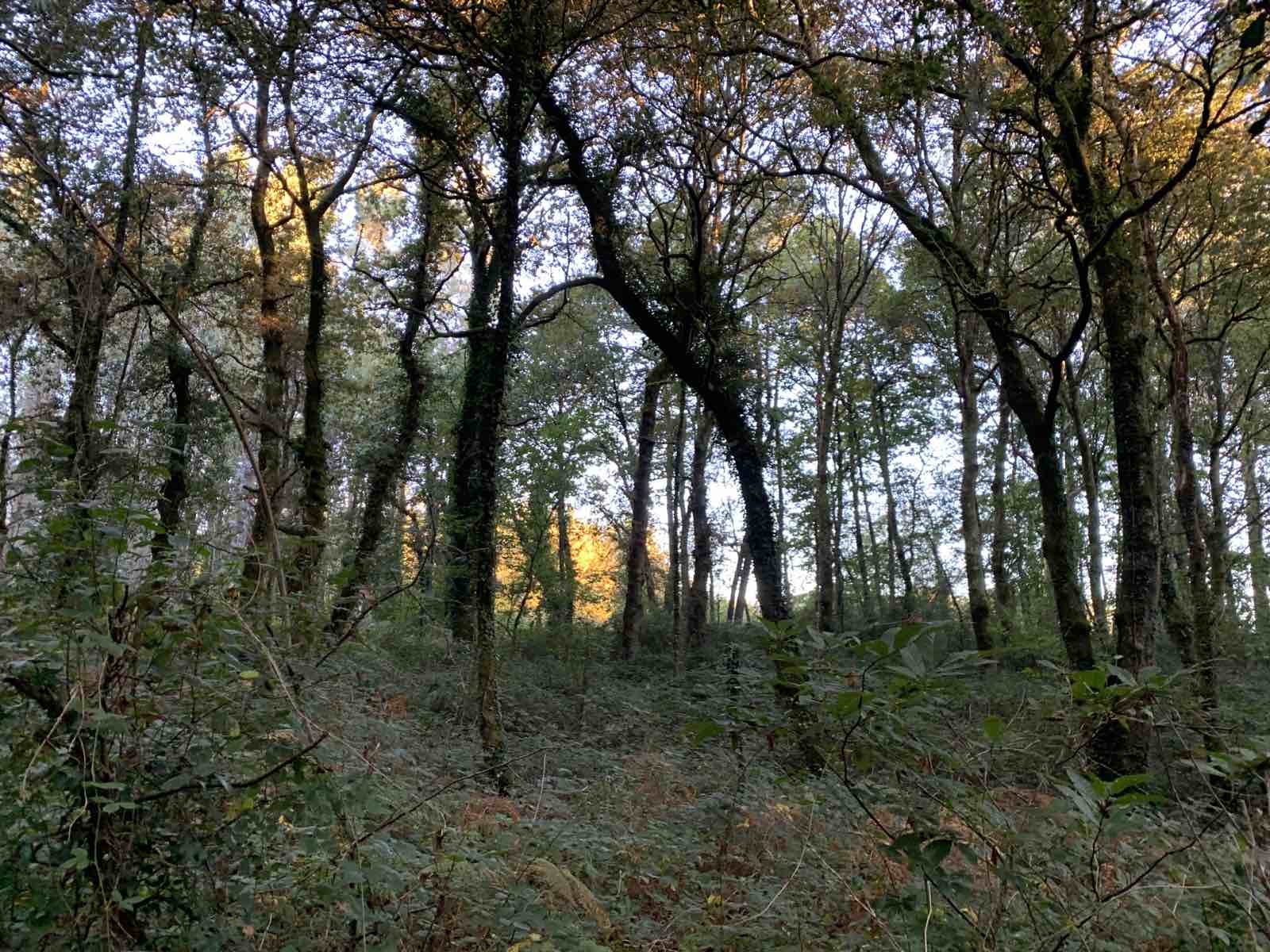
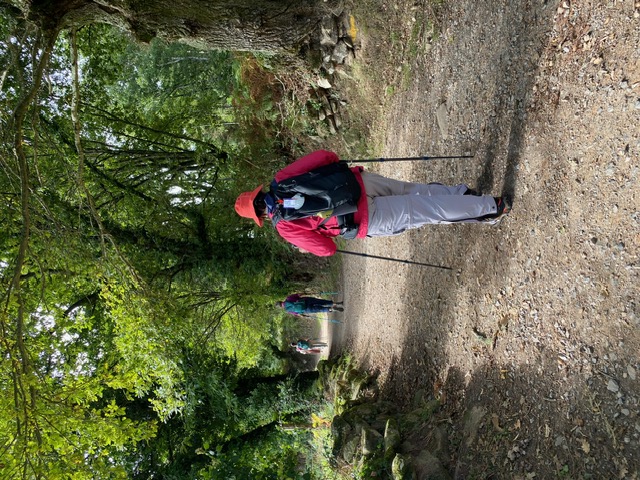
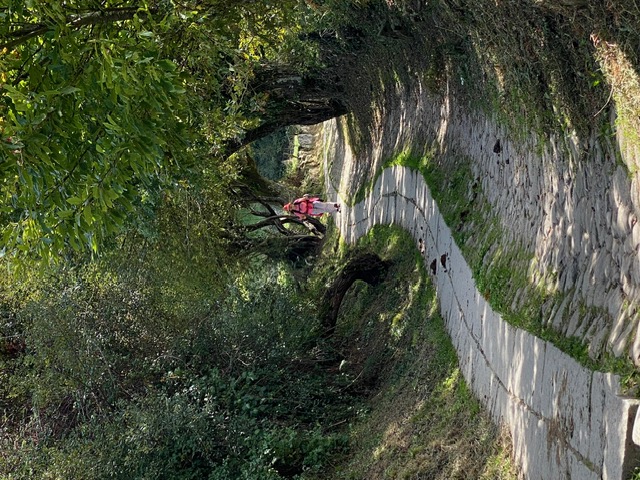
BEAUTIFUL FORESTS OF THE CAMINO – Places for reflection and prayer.
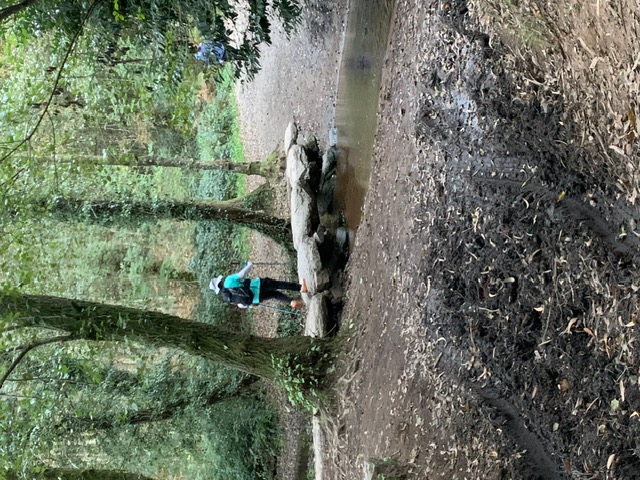
A NARROW STONE BRIDGE over a creek is where a pilgrim from Argentina waited to help us balance our way across the bridge.
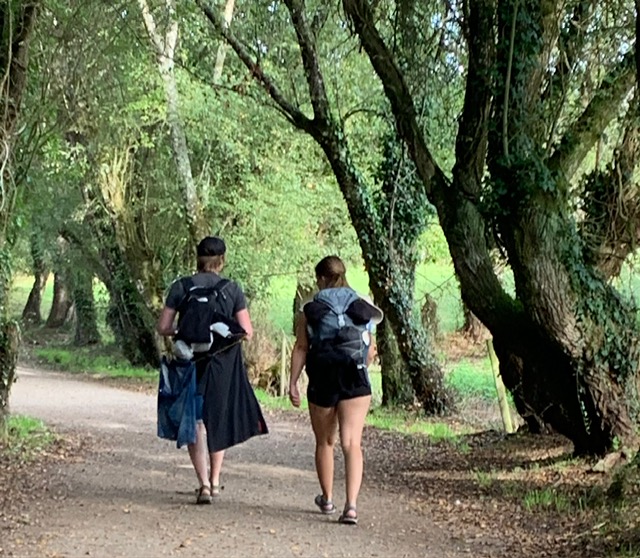
PILGRIMS ON THE GO hang their clothes to dry on their backpacks.
(The next day, during a tour, I discovered that behind where I was seated during the mass was the Portico de la Gloria which a local referred to as the “doors to heaven” – three pillars holding arches finished in the 12th cenutry. Those where what pilgrims in the Middle Ages first viewed upon arrival in Santiago de Compostela. The arched pillars are filled with more than 200 figures that told the stories in the Bible to pilgrims who could not read.)
The awe of being in a medieval church did not stop there. At the end of the mass, the famous symbol of the cathedral, the 1.8-meter silver-plated botafumiero, was swung over the heads of the churchgoers in a ritual that dates back to the 1500s, spreading the smoke from burning incense, through a mechanism developed ages ago and pulled by men dressed in red robes.

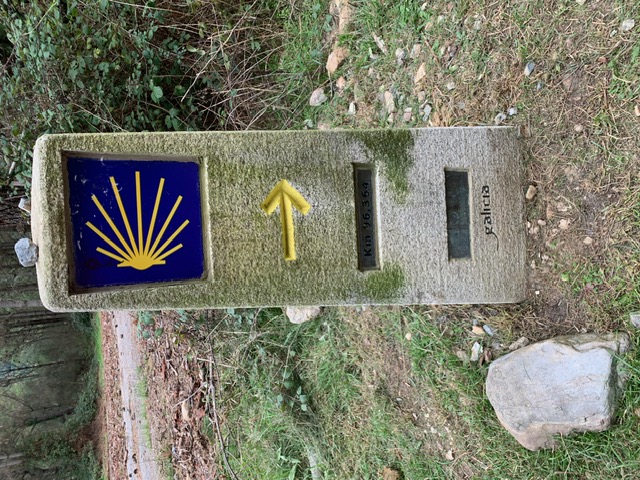
OFFICIAL MARKER of the Camino Way shows the direction through the arrow and states the number of kilometers to Santiago de Compostela.

YELLOW ARROW – The yellow arrow on walls, posts and even stones direct the way to pilgrims.
I was blanketed with the emotion of being Catholic. And to think that the call of the Camino had started in my head because I love hiking in the forests, especially trails which were there centuries ago.
The famous Camino de Santiago or the Way of St. James is a pilgrimage through a trail carved by pilgrims since the 11th century leading to the tomb of St. James in Santiago de Compostela. The Camino is a network of several routes that all lead to Santiago de Compostela. The most popular is the Camino Frances or the French Way which is a 790-km route that starts from St. Jean Pied de Port in France and winds along many towns and cities of Spain, passing Sarria up to Santiago de Compostela. The French Way and the Northern routes in Spain were included in the UNESCO World Heritage list in 1998.
So, we were pilgrims for six days from Sarria to Santiago in Galicia, Spain. For the following days we had breakfast, walked, walked, walked, rested, walked some more, ate dinner, and slept. I was with a group organized by Cebu-based travel agencies –Southwind Travel and Destination Specialists Cebu. whose owner, Marget Villarica, acted as our tour leader.
At breakfast on our second day, we shared a table with a mother and daughter from Norway who were on their 33rd day. They started at St. Jean Pied de Port in France. They hoped to reach Santiago in three days.
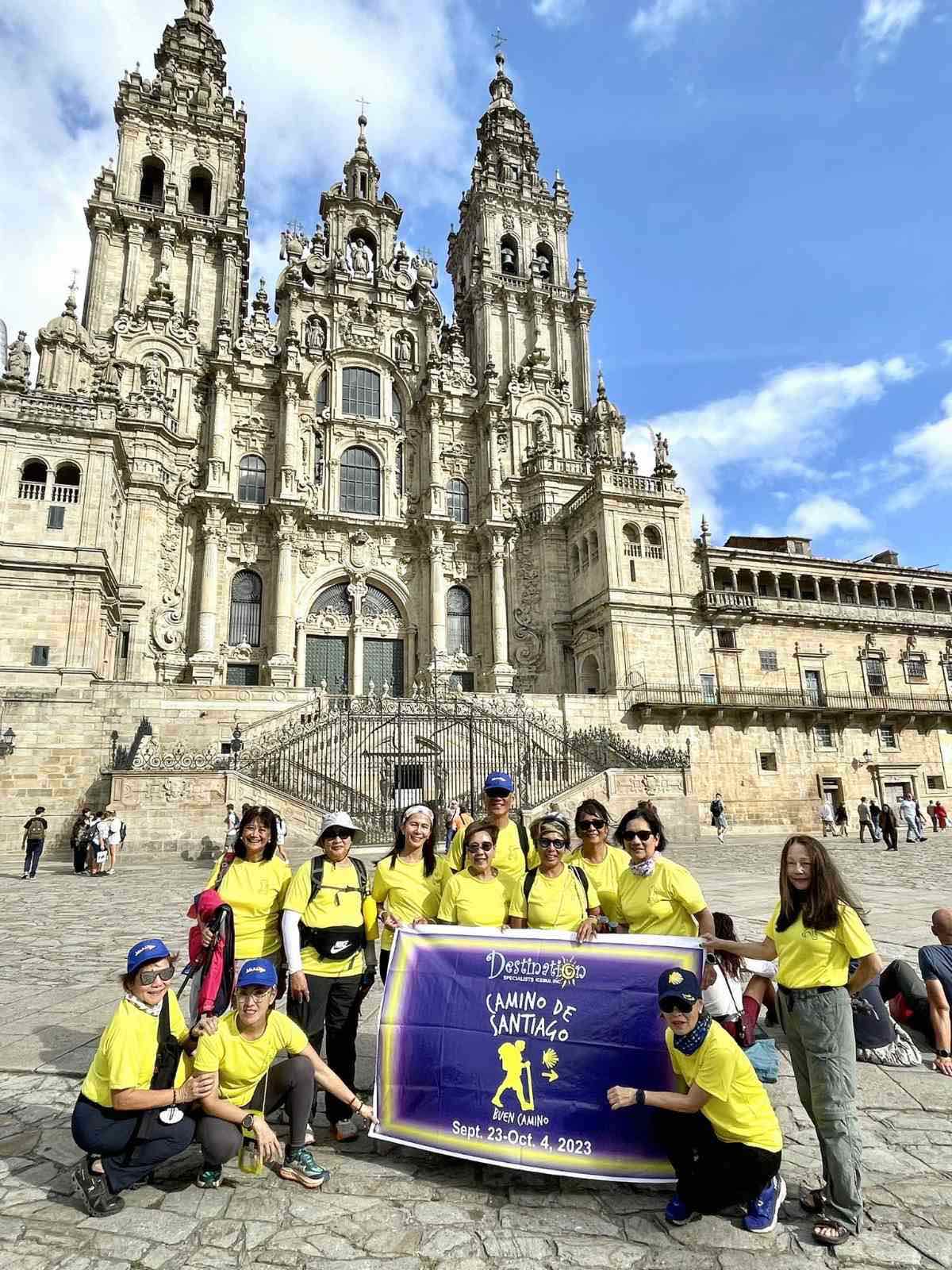
THE GROUP FROM THE PHILIPPINES in front of the Santiago Cathedral minutes after arrival, led by Marget Villarica.

WE MADE IT! – Each pilgrim has a photo like this taken. In photo, the author and Dr. Lacson (right).
Records show that in 2021, the most number of people in the Camino were from the countries of Spain, Portugal, Italy, Germany, the United States, and France. In 2022, 450,000 pilgrims walked the Camino. There have been millions of pilgrims on that trail, the first pilgrimage happening sometime in the 9th century and becoming regular from the 11th century.
Most pilgrims (about 76 percent according to records) come for religious reasons. Others are drawn to it by the myths of the trail – from magical (kindness among pilgrims), to spiritual (personal transformation), to physical (testing one’s stamina), and more recently, for tourism.


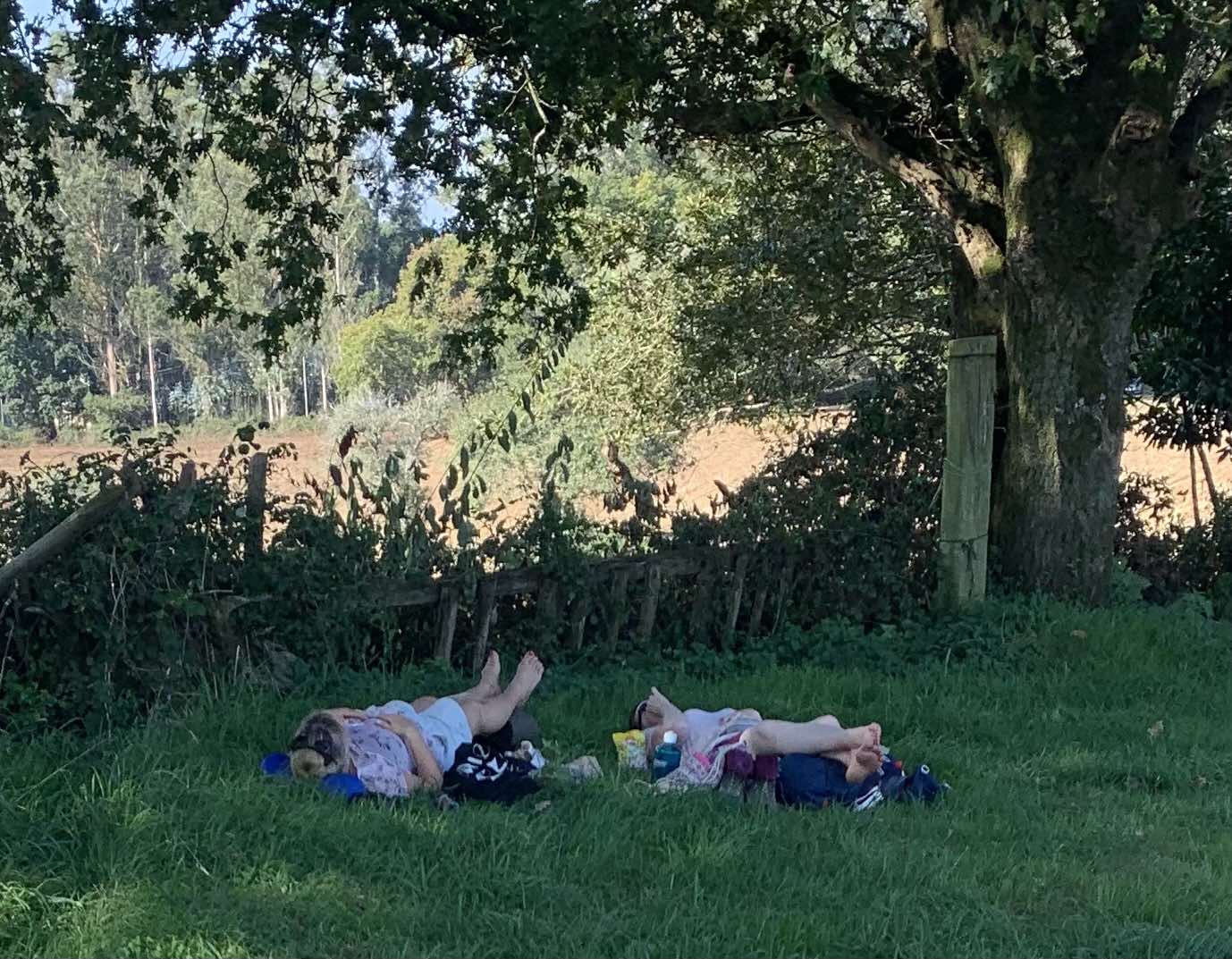
TWO PILGRIMS TAKE a break and sleep beside the trail.
It was my first Camino and probably I will walk another. The forests were very beautiful, the trees embraced me with happy thoughts. Only one in my group seemed to know the healing power nature was willing to share, I saw her many times slowing down and embracing a tree.
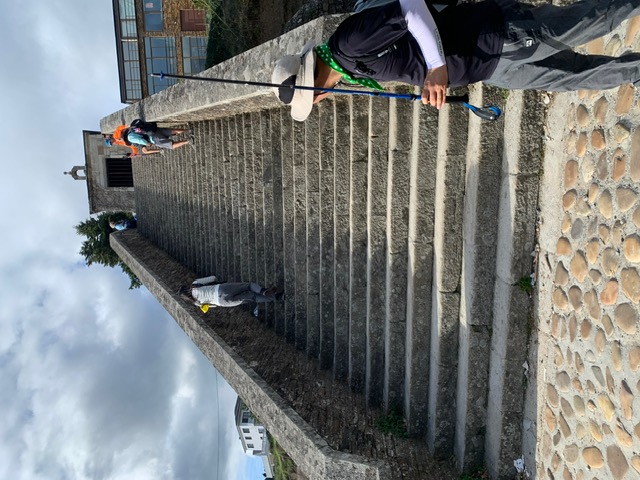
WELCOME TO PORTOMARIN – Pilgrims have to climb the 46 steps to enter the town.
The route also brought me to see many scenes of the countryside. Large cows grazing grass or walking along the same trail as us. Charming country houses with gardens, and even a wishing well. Corn fields. Orchards of apple trees and plums, and walkways tunneled by grapevines. Colorful flowers lining front yards or sprouting from unique planters, among them old hiking shoes. Smaller-sized farm machines fitted to sow seeds, till soil, or water the plants. Stone houses that looked formidable, silent, or warm. And many tourist lodges.
I felt affinity with the other pilgrims, communicating to them through sign language, or mundane words. At the last leg of the 20-km walk to Portomarin where I sat alone on a stone fence, a South Korean man cheered me on, saying he had been to Boracay and was born in Busan. When I responded – “That’s the birthplace of Jung Kook, my idol from BTS!” – we found a connection! We met again at the foot of the 46-step staircase entering Portomarin, where he offered to take my photos to avert my attention from the "monumental" task ahead. Like a meanwhile, he urged me to take the steps one at a time. (After 18.7 kilometers, every muscle in my leg was in pain!)
Also, in a forest somewhere after Palas de Rei, “Messi” was the word that connected me to a man from Argentina. Further down the trail we found him waiting for us, offering to hold our hand for balance while we each crossed a narrow stone bridge over a creek.
Language was not an obstacle to offer kindness along the trail.
But in front of the tomb of St. James, the only language was silent prayer.